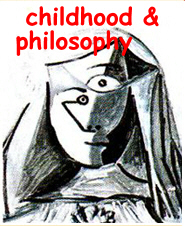from philosophical to mathematical inquiry in the classroom
Abstract
This paper discusses some major similarities and differences between community of philosophical inquiry (CPI) and community of mathematical inquiry (CMI), and offers a few examples of the implementation of CMI in the context of a school mathematics classroom. Three modes of CMI are suggested. The first mode facilitates inquiry into mathematical problems - that is, it provides a medium for “doing and talking mathematics.” In this case, CMI is primarily an avenue for problem solving—defining problems, interpreting them, working with different methods to solve them, reflecting on suggested alternative methods, verifying solutions, and drawing conclusions. The second mode leads us to “talk about mathematics” through collaborative inquiry into mathematical concepts such as axioms, theorems, algorithms, infinity, and the posing of philosophical questions that concern mathematics as a system--particular structures and rules and their relation to human experience. The third mode makes use of CMI for meta-inquiry into our collective experience in “doing and talking mathematics” and “talking about mathematics,” and may be characterized as “talking about doing mathematics.” Keywords: mathematics education; community of mathematical inquiry; mathematics teaching and learningDownloads
Download data is not yet available.
Downloads
Published
2010-04-28
How to Cite
KENNEDY, Nadia stoyanova. from philosophical to mathematical inquiry in the classroom. childhood & philosophy, Rio de Janeiro, v. 3, n. 6, p. pp. 289–311, 2010. Disponível em: https://www.e-publicacoes.uerj.br/childhood/article/view/20522. Acesso em: 30 apr. 2025.
Issue
Section
articles




